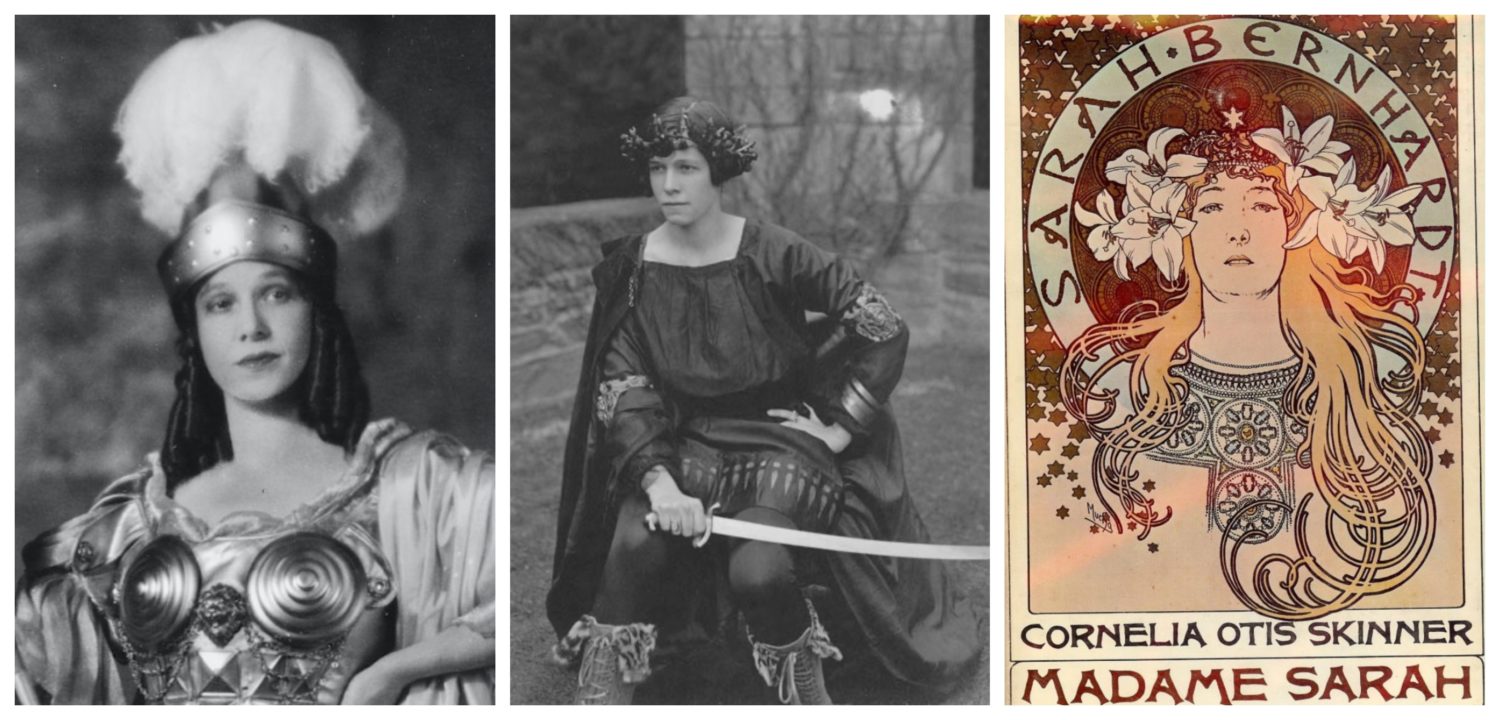
Written by Victoria Llanos ’21
In early autumn, I spoke with Mrs. Kimberly Thacker P’24, ’27, Walker’s archivist. Mrs. Thacker took me and a group of other girls on a history walk of campus. As we strolled along the grounds and through the woods, she told us of the buildings that once were: of former dorms like Old Cluett and Four Corners and of alterations to current buildings like Beaver Brook. Most importantly, though, she told us about The Ethel Walker School’s mission to educate and empower girls and young women and shared stories of students and alumni over the years.
Mrs. Thacker inspired me to look further into Walker’s history and she also helped me to plan a festive weekend activity in October: a screening of The Uninvited (1944). Mr. Scott Frey also gave an introduction about the significance of the film to the horror genre. Aside from the film’s importance to movie buffs, it features Cornelia Skinner, a Walker’s graduate. Together, Mrs. Thacker and I researched her life and found historically significant objects to put on display. Before the screening, I gave an overview of Skinner’s life and work:
Cornelia Skinner was born on May 30, 1899, in Chicago, Illinois. She graduated from Walker’s in 1913 and acted in many school productions. Her parents, Otis Skinners and Maud Derbin Skinner, were stage actors as well.
Otis Skinner also appeared in silent films and early talkies. He worked with showman and co-founder of Barnum and Bailey circus, P.T. Barnum, and in Helena Mojeska and Edwin Booth’s acting troupe. For context, Edwin Booth was one of the biggest names in American theater in the late 19th century. He frequently toured throughout the US and Europe, performing in Shakespearean plays. He also founded Booth’s Theater in New York in 1869. He may also sound familiar as he was the older brother of John Wilkes Booth, Abraham Lincoln’s assassin.
Otis Skinner became a star in his own right. He sought to play increasingly complex characters and also enjoyed acting in productions of Shakespeare. He received critical and audience acclaim for Shylock, Hamlet, Richard III, and Romeo.
His most famous role, however, was a Hajj, a beggar in the 1911 Broadway production of Kismet, a story inspired by the tales of Arabian Nights. There is also a recording of the performance in the back. However, the production hasn’t exactly aged well due to its stereotypical portrayal of Middle Easterners.
Otis also wrote books on his career in the theater. Titles like Footlights and Spotlights and Mad Folk of the Theatre were quite popular. Mrs. Thacker found a copy of Footlights in Spotlights in the Bell Library, and we were able to add it to the display.
Maud Durbin Skinner was also a stage actress and childhood friend of Ethel Walker. She alongside Otis worked in the Mojeska-Booth Theater troupe, and became protegee to Helena Mojeska, often taking up roles in Shakespearean tragedies.
Cornelia was a student at Walker’s, where she graduated in 1913. During her time at Walker’s, she acted a lot and many remarked on her tongue-in-cheek humor. She had two grandchildren, who also graduated from The Ethel Walker School: Claire W. Marshall, who graduated in 1967, and Elizabeth T. Ricketson, who went by “Lisa,” who graduated in 1956.
Cornelia then went on to attend Bryn Mawr, where she continued to act in theatrical productions. She left Bryn Mawr her sophomore year and moved to Paris to study at the Sorbonne and further pursue acting. She began her career on the French stage in 1921 and appeared in several plays before embarking on a tour of the United States from 1926 to 1929. All of her productions in this tour were one-woman shows of short character sketches she wrote herself.
She wrote many short pieces for Newspapers and magazines such as The New Yorker. These pieces were later compiled in books, including Nuts in May, Dithers and Jitters, and Excuse It Please! all of which we put on display.
She also wrote memoirs like Family Circle and plays, most notably, Our Hearts Were Young and Gay, a light-hearted description of her European tour after college. Skinner went to Hollywood to act as consultants on the film version of the book, which resulted in the film of the same name. She also hosted a production of Our Hearts Were Young and Gay her at Ethel Walker in 1950. We also displayed some photos of the event on the poster boards.
In 1952, her one-woman show Paris ’90 premiered on Broadway. Later years Skinner wrote Madame Sarah, a biography of Sarah Bernhardt, one of her favorite actresses and Elegant Wits and Grand Horizontals about the Belle Epoque.
All the while, she starred in a number of films, most notably, another adaptation of Kismet and The Girl in the Red Velvet Swing alongside Joan Collins.
Planning the event and spending time in the archives allowed me to take history, one of my favorite subjects, and apply it to my immediate environment. I always wonder about the stories and experiences that shape a place and want to share them with others – particularly in regard to a place I care about. And I care so deeply about Walker’s, as it’s like a second home. I’m so grateful that I had this opportunity to learn more about my school, to see how it’s changed, and to see – unsurprisingly – that it has always produced strong women. I love it all the more.